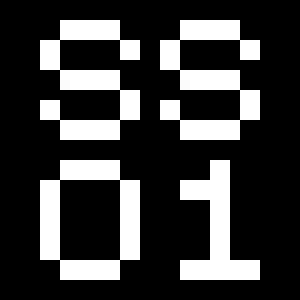Stanley
OpenType Features
«Optimo»
@|¦()[]{}¿¡‹›«»-–—·
«OPTIMO»
@|¦()[]{}¿¡‹›«»-–—·
0123456789
0123456789
0 1 2 3 4 5 6 7 8 9
0 1 2 3 4 5 6 7 8 9
0 1 2 3 4 5 6 7 8 9
0 1 2 3 4 5 6 7 8 9
0123456789
0123456789
3/4 3/8 5/8 7/8
3/4 3/8 5/8 7/8
up+down
+±×÷−=≈≠¬∞
up+down
+±×÷−=≈≠¬∞
Habcdefghijklmn
Hopqrstuvwxyz()[].,
Habcdefghijklmn
Hopqrstuvwxyz()[].,
Habcdefghijklmn
Hopqrstuvwxyz()[].,
Habcdefghijklmn
Hopqrstuvwxyz()[].,
Habcdefghijklmn
Hopqrstuvwxyz()[].,
Habcdefghijklmn
Hopqrstuvwxyz()[].,
Habcdefghijklmno
Hpqrstuvwxyz()[].,
Habcdefghijklmno
Hpqrstuvwxyz()[].,
fi ffi fl ffl ff fb ffb fh ffh fk ffk ft ff fj
fi ffi fl ffl ff fb ffb fh ffh fk ffk ft ff fj
fä fë fì fí fî fï fį fö fü
fỳ fý fŷ fÿ ffä ffë ffì
ffí ffî ffï ffį ffö ffü
ffỳ ffý ffŷ ffÿ
geführt ungefähr
geografía
fä fë fì fí fî fï fį fö fü
fỳ fý fŷ fÿ ffä ffë ffì
ffí ffî ffï ffį ffö ffü
ffỳ ffý ffŷ ffÿ
geführt ungefähr
geografía
fr ft fu gi gj gm gn gr gt gu gv gw gy ti tj tm tn tp tr tu tv tw ty zf zg zj zp zy zz ffr fft ffu gfl tti ttj ttm ttn ttp ttr ttu ttv ttw tty zzy
monozygot archeology
fr ft fu gi gj gm gn gr gt gu gv gw gy ti tj tm tn tp tr tu tv tw ty zf zg zj zp zy zz ffr fft ffu gfl tti ttj ttm ttn ttp ttr ttu ttv ttw tty zzy
monozygot archeology
ct sp st
project blasted spread
ct sp st
project blasted spread
abcdefghijklmn
opqrstuvwxyz
abcdefghijklmn
opqrstuvwxyz
ABCDEFGHIJK
LMNOPQRSTU
VWXYZ
()[]{}¡!¿?&
ABCDEFGHIJK
LMNOPQRSTU
VWXYZ
()[]{}¡!¿?&
Character Map
Uppercases
Lowercases
Small Caps
Accented Uppercases
Accented Lowercases
Accented Small Caps
Standard Ligatures
Accented Ligatures
Extra Ligatures [italics only]
Discretionary Ligatures
Punctuation
Lining Figures
Oldstyle Figures
Slashed Zero
Numerators
Denominators
Superscripts/Superiors
Subscripts/Inferiors
Prebuilt Fractions
Stylistic Alternates [uprights only]
Symbols
Mathematical Symbols
Currencies
Arrows
Ordinals
About
Inspired by Times New Roman, one of the most important and enduring typefaces of the twentieth century, Ludovic Balland forged Stanley with sharp and angular shapes, giving a contemporary edge to the project while preserving the essential qualities of its reference.
After criticizing the British newspaper The Times for being poorly printed and typographically outdated, Stanley Morison set out to propose the design of a new font. Taking into consideration the newspaper’s production methods, Morison aimed to create a very legible text typeface that was also efficient in its use of space. In 1932, Morison’s typeface was released under the name Times New Roman, and would become one of the most popular and celebrated typefaces of all time and is still widely in use today.
Sharing comparable qualities with its predecessor, Stanley offers excellent legibility and incredible sharpness at very small sizes. The drawing of the typeface is characterized by wide and honed counter-forms, as well as short ascenders and descenders. The very graphic shape of the serifs is providing a distinctive feature—with a greater contrast and straightforwardness in the Poster style.
More about the collection >



















